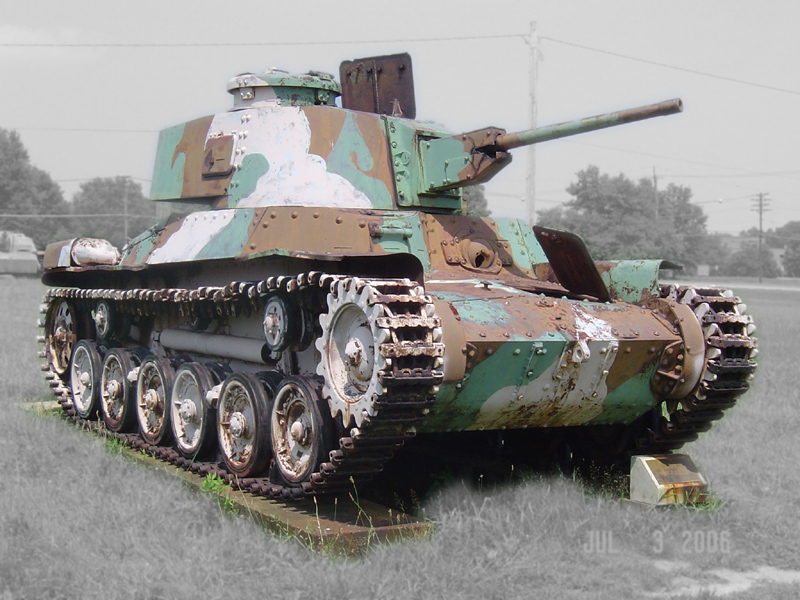To: BroJoeK
Type 97 Chi Ha"The Type 97 Medium Tank first saw action against the Soviet Union in the Nomonhan Incident of July 1939.
"The 3rd Tank Regiment of Yasuoka Detachment had already received new Type 97 medium tanks as substitutes for existing Type 89 medium tanks, but the Regiment had replaced only four (including the regimental commander's vehicle) by time the Incident occurred. During fierce fighting against the Russians, the regimental commander's vehicle received a hit and Colonel Yoshimaru was killed.
"This was a grave warning that the Type 97 medium tank had not been designed with regard to tank fighting. However, Japan entered World War II before sufficient countermeasures were considered."

14 posted on
08/04/2008 5:44:03 AM PDT by
BroJoeK
(A little historical perspective....)
To: BroJoeK
Thanks for the links. Just ‘looking’ at the competing tank designs it would appear that the main difference was in ‘how’ the armor was employed. Zhukov utilized his tanks in armored battle groups along with SP Arty & Motorized Infantry in a deep penetration battle — essentially a Blitzkrieg assault. I had read-up on the ‘incident’ during the weekend & I noted that the Russians used a lot of armored cars. This is probably how they moved their infantry.
The Japanese were more ‘conventional’ in their approach. 180 Japanese tanks. That is a divisions worth yet they were divided between only 2 tank regiments. That kinda hints at a rigid tactical system.
Even with all those seeming Russian tactical advantages, the key was the logistics employed by Zhukov. The way he utilized the limited rail capacity & augmented it with truck transport. That is why he was able to overwelm the Japanese 6th Army. Without those logistics the Russians could never have mounted an encirclement of that depth & scope.
15 posted on
08/04/2008 7:13:43 AM PDT by
Tallguy
("The sh- t's chess, it ain't checkers!" -- Alonzo (Denzel Washington) in "Training Day")
FreeRepublic.com is powered by software copyright 2000-2008 John Robinson
